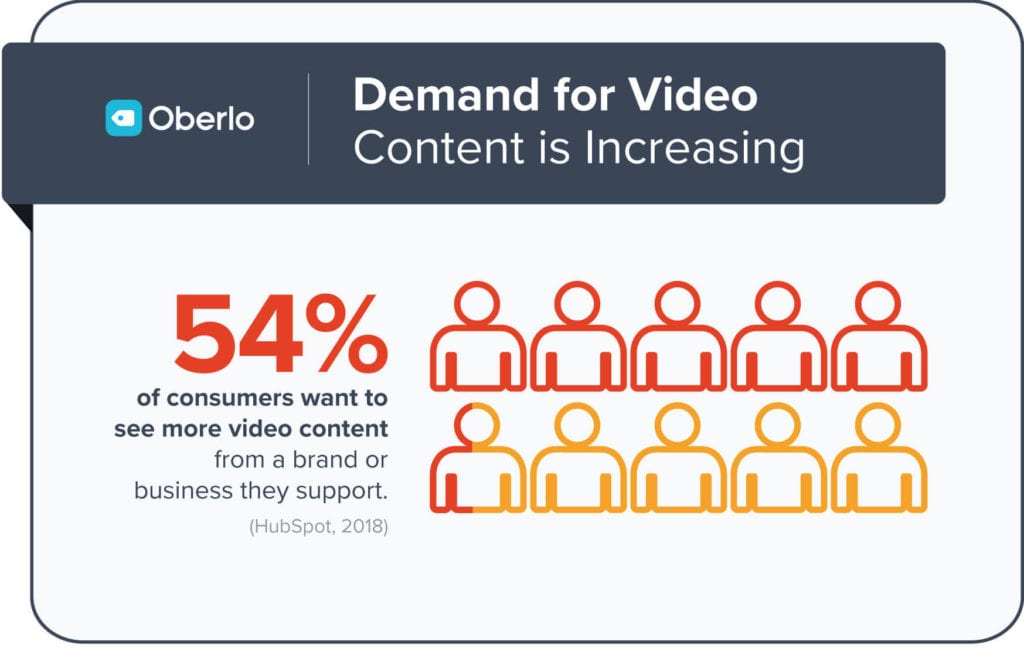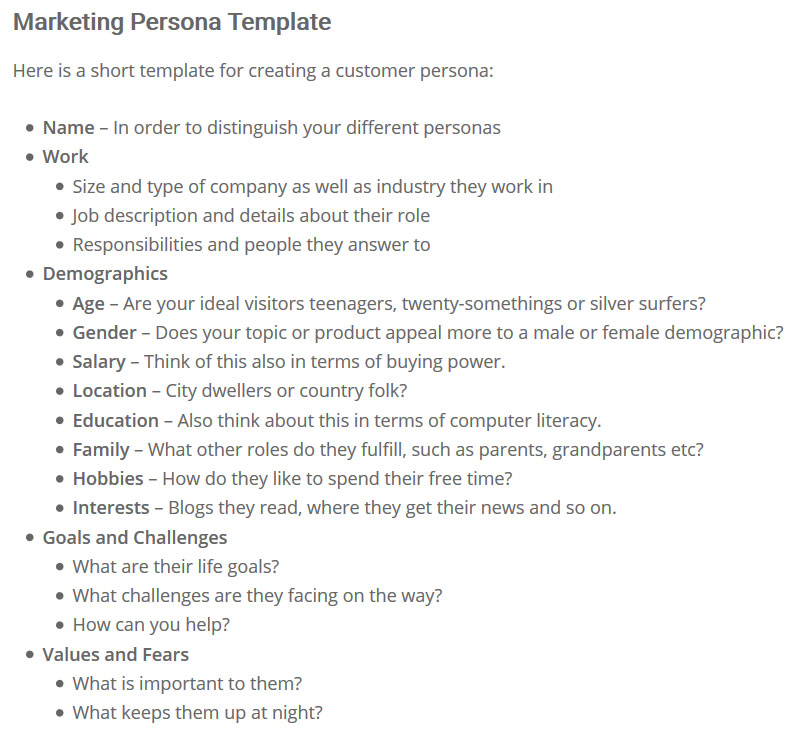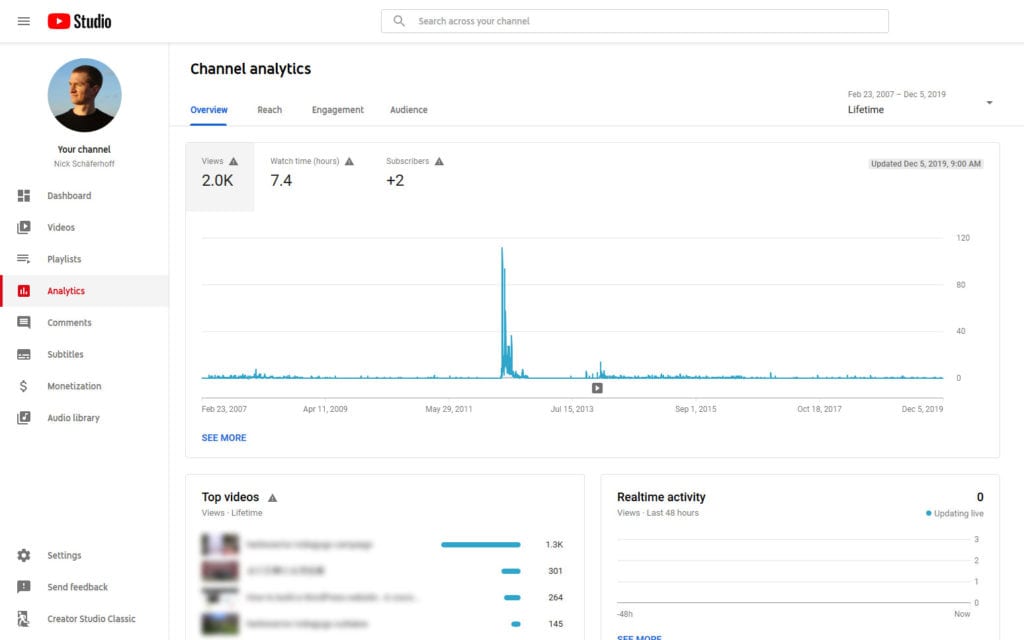It’s becoming harder and harder to reach customers with traditional methods of digital advertising. Companies need to constantly step up their game to stay relevant on the web. If you feel the same, creating a video marketing strategy for your business might just what you are looking for.
Video marketing isn’t exactly new, but it has been gaining traction as a valuable and relevant way of attracting visitors and customers. While online users often completely tune out forms of advertising like banner ads, video marketing continues to grow as a promotion channel.

It’s also quite versatile as you can use it on social media, your website, in online advertising, and various other channels. Plus, unlike typical advertising, it integrates naturally into a website’s content or a social media feed.
While video marketing may be one of the more difficult and expensive forms of marketing yourself to pull off effectively, the results are more than worth it. Just look at these stats — 12 times more shares on social media, 49% faster revenue growth, and 157% increase in organic traffic from SERPs than people who don’t use video. How could you not try it?
That’s why, today we’ll show you how to create an effective video marketing strategy, beginning to end and set you up for marketing success.
Why Video Marketing?
Your business probably operates on a tight budget, and you might spend a lot on advertising as it is. Wasting money by making bad investments can easily sink your company. Is video marketing really worth your time?
For most companies, it almost certainly is. Video advertising is popular, versatile, and effective. If you have a social media account, you’ve undoubtedly noticed the explosion of branded video content. 85% of Americans watch videos online, reaching up to 95% in some other countries. Pretty much everyone watches videos, so using them will undoubtedly expand your reach.
And it’s not just popular among users. 87% of businesses use video marketing, and 83% say it gives them a good ROI. In short, your competitors are doing it, and most of them are finding that it works well. That means they already have an edge on you.
Considering how popular video content is among users, it’s not surprising to see its effectiveness as a marketing tool. 83% of consumers would share a branded video they enjoyed, and 85% want to see more of them from companies they like. For example, this brand video made quite a splash when it came out:
Your consumers aren’t just willingly engaging with video content — they want to see more of it. It’s rare for advertising to elicit such a strong positive reaction, so this could completely revolutionize your marketing.
You should certainly employ other, perhaps more well-established forms of online advertising alongside it. But video marketing isn’t just a fad that’s on its way out. More and more marketers are adopting this versatile form of promotion.
Yet, many businesses choose not to pursue it simply because they don’t know where to start. If you’re among them, this guide to creating your own video marketing strategy will help you learn the basics.
1. Understand Yourself and Your Audience
It might be exciting to dive straight into recording and editing, but this process starts slow. Before you so much as begin making plans, you need to determine your target audience and understand your own business’ branding.
Every business targets a buyer persona: the ideal person who’s most likely to be interested in your products, broken down by demographics like age, race, and interests. The same goes for marketing video content.
Who is your target audience? Who is your content most likely to reach? Your first step should be doing some research and getting a rough idea of what platforms they’re on, what types of videos they’re interested in, and what tone and style resonates best with them. Finding success in video marketing starts with understanding your audience.

For example, if you decide to produce step-by-step software tutorials, how you go about this depends on your target audience. Some may prefer a straightforward and serious approach, while others would like an upbeat narrator. A slow-paced tutorial that covers all the very basics is appropriate if you’re targeting older users, but it would quickly frustrate a young adult that’s already well-versed in technology.
Know your audience, and be prepared to craft your content around them.
Besides that, figuring out what type of content is consistent with your branding is key to reaching your target audience. What sort of videos do similar companies put out? Do they create helpful guides, funny viral videos, professional interviews and explainer videos? It isn’t just about your audience; what type of videos work with your branding?
Figure out how to use the brand you’ve built to put your own spin on things. There are many types of video content you can create, but you’ll need to make it yours if you want to leave an impact.
2. Lay Out a Basic Video Marketing Strategy
Once you have a good idea of who you’re marketing to, it’s time to start creating a rough draft of your strategy. That means doing all the deep research, making outlines, and generally deciding on goals and the way you’re going to go about this.
First step: Research. The best place to start is figuring out and choosing the types of videos you want to focus on. Here are just a few examples:
- Explainer videos are essentially mini advertisements that convince customers to try your product.
- Brand videos focus on your company’s mission, vision, and goals.
- Product videos show demos, unboxings, and shots of your stuff in action.
- Instructional videos and tutorials walk users through using your product.
- Case studies feature your customers and the positive effects you’ve had on them.
- Vlogs give a glimpse into you and your company’s daily life.
Pick a few that are appropriate for your brand and interesting to your target audience. This will help with the next step: planning out the particulars.
How long do you want your videos to be? They might be less than a minute long, just a few minutes for bite-sized content, or even 20-40 minutes of in-depth discussion. This very much depends on the type of videos you’re making.
You should also decide how frequently you’ll want to post them — daily, weekly, monthly? — and the tone you’re trying to emulate. Are your videos formal and professional, or casual and cheerful?
Last, pick your platforms. Social media like Twitter and Facebook are usually best suited for short explainer videos and fun viral subjects, while YouTube and Vimeo host all kinds of medium- and long-form video content.
You don’t need all the nitty-gritty details, but it’s good to have a general plan for your project’s scope.
2.1 Create a Detailed Content Strategy Guide
Once you have a basic idea of what you’re after, you should create a detailed content strategy guide. This will help you and anyone who’s working with you stay on brand and keep things moving forward. Keep it all collected in one document for easy sharing.
In it, start by stating your reason for pursuing video marketing — what you hope to achieve, and what you want to give your customers. Also clearly identify your target audience, who your videos are made for, and how you plan on reaching them.
You should next lay out the detailed guidelines for your video content, using the research you did before. Here are some good things to include:
- Target video length
- Tone
- Schedule
- Publishing platforms
- Branding considerations like colors to use in graphics
Also state how you plan on managing the creation of videos before, during, and after their publication. List who’s involved at each stage of the process so they can be reached easily.
If you have any resources like a schedule, brainstorming forum for pitching video ideas, or links to video content you’d like to draw inspiration from, make sure to list these as well.
You might not know all of this yet, but start making this document anyway and fill it out to completion as you do more research.
(By the way, it’s also a good idea to have a content style guide for your blog.)
2.2 Figure Out the Budget
Last, you need to determine how much this is all going to cost. This includes the initial price of purchasing equipment and software, plus any recurring costs like video hosting, advertising, or paying actors.
If you’re starting out with yourself, a smartphone, and a free editing program, you might not need to buy anything. But creating more professional, high-quality content will usually mean paying some money. Here’s a brief list of items to take into account.
- Equipment: Video cameras, lenses, lights, tripods, and any other accessories you’ll need to improve the quality of your film.
- Locations and Studios: Setting up a recording studio, filling out the set/purchasing a green screen, or renting out a location to film in.
- Employees: Actors to play roles, film crew to work the cameras, lighting, and audio, editors to fine-tune the videos, and animators or artists to create graphics.
- Costumes and Props: Professional clothes, makeup, and props if necessary.
- Software: Editing software to clean up, cut, and tweak your videos. This is usually a one-time fee but it can cost several hundred dollars.
- Advertising: Don’t forget to budget the money it’ll take to push your video out there and get it seen.
Depending on the type of videos you’re making and how much you’re investing into quality, you might need to pay thousands of dollars, or only a few hundred. It’s best to start small, gauge the success of your endeavor, and work your way up from there.
3. Bring it All Together
Once you have a concrete plan in place and the resources to pursue it, you can finally make the arrangements. Hire new employees or give your current ones tasks, write up and edit your first script, and start ordering props and setting up your recording studio.

Once you’ve gathered everything you need, you can finally record, edit, and upload your first video. This first experience should give you a better idea of the time the whole process will take, so you may want to tweak your schedule a little. Then you can get right to work on producing your next set of content!
4. Analyze and Optimize
No matter how much planning you put in, your first few videos definitely won’t be perfect, but it’s part of the learning experience. Part of having a video marketing strategy in place is to use analytics and social media metrics to help you gauge user reaction and figure out what you did right or wrong. Platforms like Twitter and YouTube come with comprehensive analytics built in, but if you’re hosting on your own site, you may need to use a tool like Google Analytics.
These tools can gauge clicks and watch time across individual videos, which are invaluable statistics to examine in depth. If you’re posting somewhere like YouTube or on social media, you’ll also have access to engagement metrics like view count, shares, likes, and comments.

At first, you may want to post a variety of content and see what gets the best response. Every few weeks or months, make sure to go over your analytics and evaluate how well you’re doing. Use this to optimize your content strategy and see if you’re doing everything right or if it’s time to take things in a new direction. After that, it’s a matter of rinse and repeat.
Create a Detailed Video Marketing Strategy to Get More Clicks
Video marketing is definitely one of the more difficult promotion strategies to set up and maintain, but it’s also one of the most lucrative sources of growth.
Creating an effective video marketing strategy is the key to finding success in your new endeavor. Identifying your brand and audience, planning around this knowledge, and analyzing your metrics to continue optimizing your strategy will help you grow and make better content.
While high production value should be an end goal, you don’t need to spend thousands of dollars to get into video marketing. You can start with a smartphone camera and a free video editing program. Pick a budget that matches your business and see what you can do.
Do you think short-form or long-form video content is more successful for businesses? Which do you prefer to watch yourself? Optimizing video length is crucial to success, so let us know which you think has more impact.
The post How to Create a Video Marketing Strategy in 6 Simple Steps appeared first on Torque.
